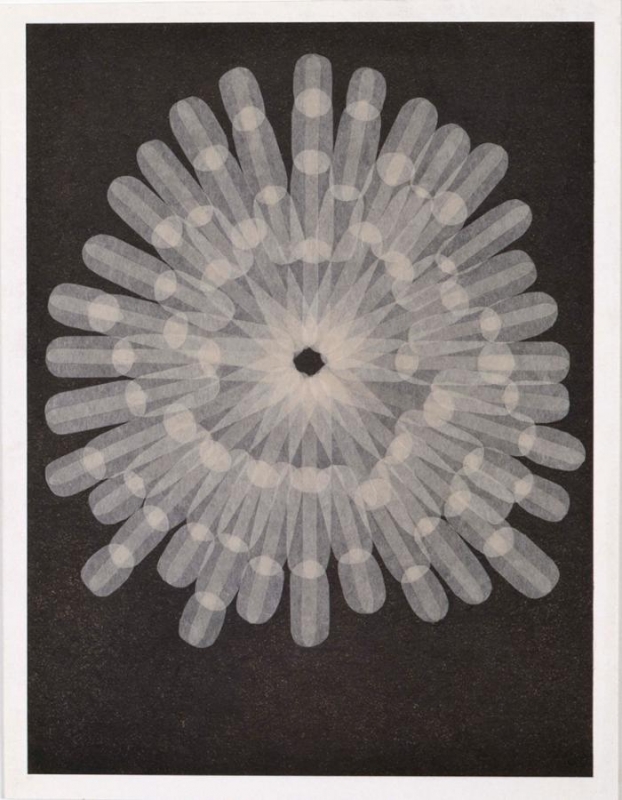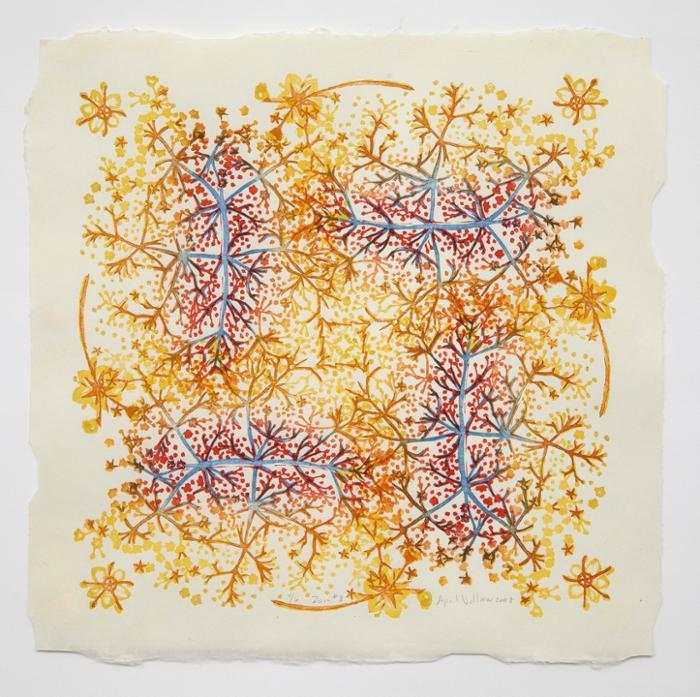“Mokuhanga: Impressions Past and Present,” an exhibit of Japanese woodblock prints created by three generations of artists, runs Jan. 3-March 13 in the Crowell and West Galleries in the Feigenbaum Center for Visual Arts.
Mokuhanga, the traditional printmaking technique of Japan, was perfected during the 18th and 19th centuries.
It involves hand-printing images from carved blocks of wood, using water-based inks. These inks provide a wide range of vivid colors, glazes and transparency, as opposed to western woodcut, which often employs oil-based inks.
The show features 17 artists with a total of 30 works. Twelve are accomplished contemporary artists whose original prints show the flexibility and expressive possibilities of this ancient medium.
An opening reception with gallery talks by two of the artists – Takuji Hamanaka, a Brooklyn-based Japanese master printer, and April Vollmer, mokuhanga artist and author of the textbook, Japanese Woodblock Print Workshop – is scheduled for Thursday, Feb. 1, 5- 7 p.m. The event is free and open to the public.
“We are excited to have these great artists visiting campus to work and talk with our students and faculty,” said Sandy Wimer, printmaker and senior lecturer in visual arts. Wimer curated the exhibit with Sheri Lullo, assistant professor of art history.
The reception also will feature printmaking demonstrations and a performance by members of Zakuro-Daiko, a student taiko drumming ensemble led by Jennifer Matsue, director of the Wold Musics and Cultures Program.
The mokuhanga exhibition complements a course that Wimer and Lullo are teaching together this term.
In “The Floating World: Edo Prints and Printmaking,” students are exploring the history of Japanese prints during the Edo period (1603-1868) and will produce a portfolio of woodblock prints based on ukiyo-e, or "floating-world pictures.” Ukiyo-e, original to Buddhism, refers to the ephemeral nature of the experienced world.
The earliest works in “Mokuhanga: Impressions Past and Present” date to the latter half of the Edo period and are part of the Union College Permanent Collection. In addition, two works by the modern Japanese printmaker Umetarō Azechi are on loan from Washington, D.C., collector James McNaughton.
The majority of the prints are by contemporary American and Japanese artists who employ traditional techniques.
“We have work from three important historical periods – Edo, Azechi’s time (mid-20th century), and the present,” said Wimer. “Azechi’s work functions as a beautiful transition between past and present.”
Lullo indicated that the reference to impressions in the exhibit’s title can be understood in two ways.
“It conveys the wide-ranging historical sensibilities of the prints and the notion that these works are as much about process as they are about image.”
In addition to Hamanaka’s and Vollmer’s Union February visit, Mike Lyon is scheduled to come to campus March 1 to give a lecture during Common Hour and talk with printmaking students. Lyon, based in the Midwest, is a pioneering figure in the growing field of post-digital printmaking and graphics. He combines automated machine tools and digital technology with the cutting of his blocks.
Wimer’s connection to these three artists, in particular, has produced lasting impressions of many kinds.
It was Vollmer who first introduced Wimer to mokuhanga more than a decade ago, and all came to campus as part of the last Japanese woodcut show Wimer curated, in 2005.
“Since that show, I have sent students to Takuji and to Mike when they asked to learn this technique, using the Beyond the Gates grant from Visual Arts to help fund their experience.”
For example, Kevin Barker ’13, a double major in visual arts and Japanese, took a woodcut workshop in New York with Hamanaka, which influenced his senior thesis in Japanese woodcut technique. Kristofer Hammer ’15, who now teaches in Japan, was a bioengineering major with minors in Japanese and visual arts who worked with Lyon at his studio in Kansas City, Mo.
“It’s nice to know that the mokuhanga artists have continued to be there when I asked for their help,” Wimer said. “As a result, our students have had tremendous opportunities to learn and grow in this exciting field.”
“Mokuhanga: Impressions Past and Present” is supported by the Tina and Richard Carolan Foundation, the Mandeville Gallery, the Department of Visual Arts, Asian Studies, and the Gender, Sexuality and Women’s Studies program.

